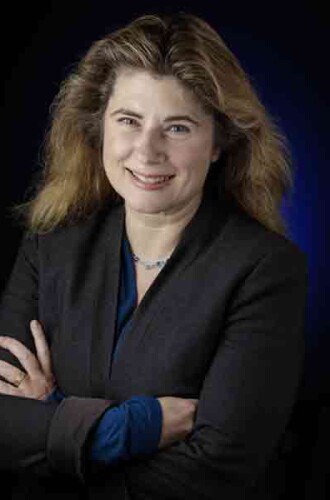
The Hubble Space Telescope, star matter, measuring the distance of space — and nearly all of the accomplishments we’ve worked toward in astronomy and astrophysics would not be possible without the groundwork laid by women.
Illuminating the work of these women is especially important to Michelle Thaller. She’s an astrophysicist and the assistant director for science communication at NASA’s Goddard Space Flight Center. She’s also a Wisconsin native who is returning to Milwaukee to give a presentation tomorrow night, all about these hidden women and other space discoveries.
"I think a lot of people don't realize that women astronomers really laid the groundwork for this, and so it's a chance to celebrate some of my favorite things to talk about and geek out about them. But, also, tell a story about how we often discount that women were always there in astronomy and always doing really significant work," says Thaller regarding the presentation.
Henrietta Leavitt
Henrietta Leavitt was one of many women astronomers working at Harvard University when the first giant telescopes were built. Leavitt was part of an effort to catalog the information being processed through these large telescopes.
Thaller says, "She was somebody who set up the idea that really [there] were these different types of stars ... It began to be a way that we were able to find out the scale of the universe, really how big the universe was. She was the first person through her work that was able to measure the distance to the nearest galaxy."
Cecilia Payne-Gaposchkin
Payne-Gaposchkin began her work in the field of astrophysics in the 1920s as a graduate student at Harvard University. In an era where the widely accepted view of stars was that they were made of rocks, she was the first to realize what stars were made of.
"Cecilia looked very closely at the light that was coming from them and realized there was no way that could be, given these observations. They have to be made out of mostly hydrogen gas. And the establishment laughed at her for like a week. And then they looked at it and said, 'She's absolutely right. There's no way it could be anything other,'" says Thaller.
Payne-Gaposchkin later became the first chair of Harvard's Astronomy department.
Nancy Grace Roman
After graduating from the University of Chicago, Grace Roman was repeatedly denied tenured professor appointments due to her gender. But in 1958 she became the inaugural head of astrophysics at NASA.
Thaller says, "Think about that. The very first time NASA has a head astronomer scientist, it's a woman. And I mean Nancy was that good, that [NASA] really wanted her. And she became the person that advocated for the idea of telescopes in space up above the atmosphere."
"Astrophysics is everything that's going on around you. It's not just what happens above the atmosphere."
-Michelle Thaller
The contributions made by these scientists helped open doors for others to contribute in the field. Thaller says, "We have, by far, the most diverse selection now we've ever had — not just women, but ethnicities [and] different nations."
This free presentation will take place on Sept. 26 from 5:00p - 6:00p at the UWM Union Wisconsin Room. More information on the talk can be found here.







